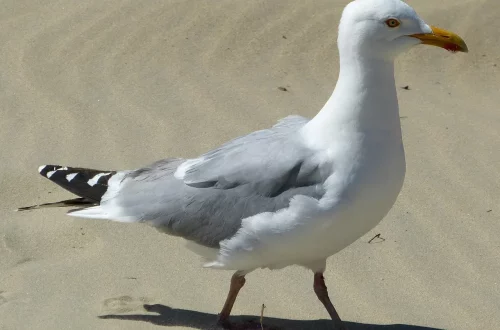
Heartfelt Prayer for Your Lost Pet: Finding Comfort and Hope
Loss is an intrinsic part of life, yet the pain that accompanies it can feel insurmountable, especially when it involves a beloved pet. Pets are not just animals; they become integral members of our families, offering unconditional love, companionship, and joy. The bond we share with them is unique and profound, making their absence even more challenging to bear. When we face the heart-wrenching reality of losing a pet, it’s natural to seek solace in various forms, including prayer and reflection.
Prayer serves as a powerful tool for many individuals navigating the tumultuous waters of grief. It offers a moment of pause, a chance to connect with deeper emotions and find a semblance of peace amidst the chaos. Whether you are spiritual, religious, or simply seeking comfort in a moment of despair, crafting heartfelt prayers can help channel your emotions and promote healing. The act of praying can be meditative, providing a space to honor the memory of your pet, express your sorrows, and find hope for the future.
In these moments of sorrow, it’s essential to remember that you are not alone. Many individuals have walked this path before you, finding support in their communities, friends, and family. As you navigate your feelings of loss, consider how you can honor your pet’s memory while finding comfort through prayer and reflection. Embracing your grief, allowing yourself to feel, and seeking solace in spirituality can be powerful steps towards healing.
Understanding Grief and Loss in Pets
The experience of losing a pet can be as profound as losing a human companion. Pets offer us unconditional love and companionship, and their absence leaves a significant void. Grief is a complex emotional response that encompasses a range of feelings, including sadness, anger, guilt, and even relief in some cases. Understanding the stages of grief can be beneficial in processing these emotions.
The Kübler-Ross model outlines five stages of grief: denial, anger, bargaining, depression, and acceptance. While these stages are often associated with the loss of human loved ones, they are equally applicable to the loss of pets. Initially, you may find yourself in denial, struggling to accept that your beloved pet is gone. This is a protective mechanism that allows you to slowly come to terms with your loss.
As you move through the stages, anger may arise, directed towards yourself, your pet, or even the circumstances surrounding their passing. It’s essential to acknowledge this anger and understand that it is a natural part of the grieving process. Bargaining often follows, where you may find yourself wishing for different outcomes or contemplating what you could have done to prevent the loss.
Depression can set in as the reality of the situation sinks in. This stage can be particularly isolating, as the world around you continues to move forward while you feel stuck in a cycle of sorrow. Finally, acceptance allows you to come to terms with your loss and find a way to live with the memories of your pet. It’s important to remember that grief is not linear; you may find yourself cycling through these stages multiple times.
Understanding these stages can help you navigate your feelings more effectively. Surrounding yourself with supportive friends and family, engaging in self-care, and allowing yourself to grieve in your own way can foster healing and growth.
The Healing Power of Prayer
Prayer can serve as a powerful source of comfort during times of grief. Whether you are religious or spiritual, the act of praying allows you to express your emotions and connect with something greater than yourself. Many find that prayer provides a sense of peace and solace, helping to alleviate some of the burdens of grief.
When you pray for your lost pet, you are creating a space for reflection and remembrance. You may choose to recite traditional prayers or compose your own. Personalizing your prayers can make them more meaningful and help you articulate the unique bond you shared with your pet.
Consider dedicating a specific time each day for prayer or reflection. This practice can serve as a ritual, allowing you to create a consistent space to process your feelings. You may want to light a candle, find a quiet spot in your home, or even sit in a place that holds special memories of your pet. This intentionality can enhance your connection to the moment and provide a deeper sense of healing.
In your prayers, you might express gratitude for the time you had with your pet, acknowledge the pain of your loss, and ask for guidance or comfort during this difficult time. Sharing your feelings with a higher power can foster a sense of connection and understanding, allowing you to feel less isolated in your grief.
Additionally, you might consider incorporating your pet’s memory into your prayers. You could write a letter to your pet, sharing your thoughts and feelings, or create a small altar with their favorite toys or photos. These acts of remembrance can deepen your connection to your pet and facilitate healing.
Creating a Memorial for Your Beloved Pet
Honoring the memory of your pet through a memorial can be a deeply healing process. A memorial serves as a physical representation of the love you shared and provides a place for you to reflect on your cherished memories. There are countless ways to create a memorial, and it can be tailored to fit your personality and the unique bond you had with your pet.
One popular option is to create a memorial garden. You can designate a specific area in your yard or a pot on your balcony where you plant flowers or foliage that remind you of your pet. Consider incorporating a stone or plaque with your pet’s name, dates, or a special message. This living tribute can serve as a peaceful space to visit and remember your beloved companion.
Another idea is to create a scrapbook or photo album dedicated to your pet. Collect photographs, mementos, and written memories to compile a tangible representation of your time together. This can be a therapeutic activity, allowing you to reflect on joyful moments and celebrate the life of your pet.
You might also consider commissioning a piece of art or having a custom portrait created in honor of your pet. This artwork can serve as a lasting reminder of the bond you shared, bringing comfort and warmth to your space.
Hosting a small gathering or memorial service with close friends and family can also be a meaningful way to honor your pet’s life. Share stories, light candles, and offer prayers together. This communal experience can foster healing and support, reminding you that you are not alone in your grief.
Ultimately, the way you choose to memorialize your pet is deeply personal. Allow your creativity to guide you, and don’t hesitate to incorporate elements that resonate with your emotions and memories.
Finding Community Support
Navigating the journey of pet loss can often feel isolating. However, seeking support from others who understand your grief can be incredibly healing. Many communities have resources available for pet loss, including support groups, online forums, and counseling services. Engaging with those who share similar experiences can provide validation and comfort during this challenging time.
Support groups offer a safe space to express your feelings and connect with others who have experienced similar losses. Many participants find solace in sharing their stories, which can foster a sense of belonging and understanding. In these groups, you can discuss your grief openly without fear of judgment, allowing you to process your emotions more effectively.
Online forums and social media groups dedicated to pet loss can also provide valuable resources. These platforms allow you to connect with individuals from around the world, offering a wide range of support and perspectives. You can find comfort in knowing that others have walked this path and have found their way through it.
Counseling services, both in-person and online, can offer professional support tailored to your needs. Therapists who specialize in grief and loss can provide coping strategies and tools to help you navigate your emotions. Engaging in therapy can be a proactive step toward healing, offering a structured environment to explore your feelings.
In addition to formal support, don’t underestimate the power of your existing relationships. Reach out to friends and family members who understand the bond you had with your pet. Sharing your feelings with those close to you can foster connection and support.
Remember, grieving is a personal journey, and there is no right or wrong way to navigate it. Be gentle with yourself, and allow yourself the space and time to heal. Embrace the support available to you, and know that your feelings are valid.
As you navigate the path of grief, remember that healing takes time. Allow yourself to feel, to pray, and to connect with others who understand. While the pain of loss may never fully dissipate, the love and memories of your cherished pet will always remain a part of you.
*This article is not intended as medical advice. For any health-related concerns, please consult your healthcare provider.*




